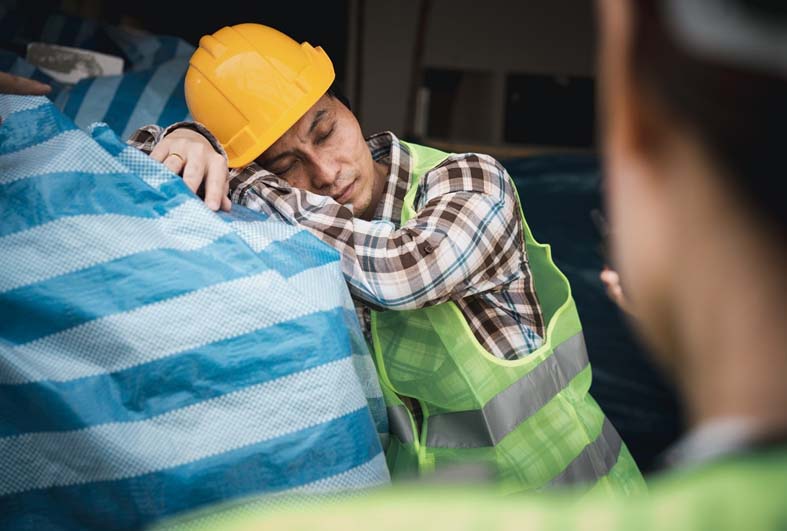Sustained exposure to high temperatures at work reduces productivity and increases the risk of injury, sickness and death.
As the world becomes ever hotter, the need to address this challenge becomes more urgent.
While heat stress affects predominantly outdoor workers in physically demanding jobs such as agriculture and construction, it can also affect workers in indoor environments where the temperature is not regulated, or where heavy protective clothing is required.
The International Conference on Occupational Heat Stress, hosted by Qatar’s Ministry of Labour in collaboration with the ILO, highlighted the need for all countries to adopt effective policies to prevent heat stress.
Ruba Jaradat, ILO regional director for Arab States, said, “We estimate that 2% of total working hours worldwide will be lost every year, either because it is too hot to work or because workers have to work at a slower pace. More concerted commitment by governments and employers is needed to prevent and mitigate the impact of heat stress on workers worldwide.”
“Building national capacities to monitor heat stress cases and ensure the implementation of new measures is key to protect workers and promote a healthy and safe work environment,” said Qatar's Minister of Labour Ali bin Samikh al-Marri. "Qatar has played a leading role in protecting workers from occupational heat stress, with the adoption of one the world's first comprehensive plans to mitigate its effects on workers' productivity.”
Qatar enacted new legislation in 2021 which, in addition to expanding the hours during the summer months when outdoor work is prohibited, also requires annual health checks for workers and mandatory risk assessments to be prepared by enterprises.
The conference facilitated an extensive exchange of knowledge and experiences on the issue of heat stress, and explored ways to prevent and mitigate related hazards. It recommended a number of measures including further research into areas such as heat exposure impacts, especially on vulnerable groups; the relative effectiveness of different heat mitigation strategies in different industries; gender-related heat exposure; and climate impact on OSH, as well as the use of AI and mobile technology. It also urged further regional and international collaboration for the exchange of knowledge and coordination of research.
While wearable technology can be harnessed to prevent and mitigate workers’ exposure to extreme heat, effective low-cost and practical measures also exist, the conference report noted.
“There is evidence of the efficacy of protocols such as WERS (water, electrolytes, restand shade), and the experience from Qatar and several other countries illustrates that awareness raising, training, implementation and enforcement can reduce the risk of heat stress on workers,” according to the report.
The involvement of employers and workers in the design of interventions is crucial, it added. While the implementation of adaptation measures at the workplace level are key, there also needs to be an investment in strengthening institutions and improving policies, regulations and enforcement at the national level, the conference report noted.
There are a number of initiatives to tackle heat stress underway in the region. Dubai Municipality, for example, launched 'A safer summer' campaign this year, involving educational and awareness events and activities aimed at emphasising the need of adhering to safety and health regulations. These include field visits to workplaces and public places, and publishing tips and awareness bulletins related to the summer season.
While under Emirates Global Aluminium’s ‘Beat the Heat’ programme, employees are trained to detect the early signs of heat stress in themselves and others. EGA conducts hydration tests before and during shifts, and employees are encouraged to take regular breaks and cooling showers. Cooling booths, drinking stations, icemakers, and portable air conditioning units in EGA production areas help keep people cool. EGA used wearable devices for the first time in a trial of 50 volunteers last summer, and has expanded the use of these this year.
For further information on the ILO's work on heat stress, see here






